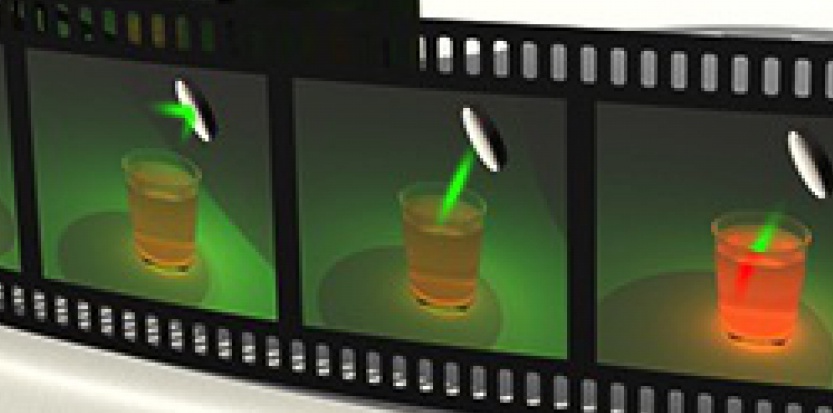Since its invention in 1839, capturing the motion has always been one of the obsessions of photography. In 1878, for the first time a trotting horse was captured on a film and in 1887, the trajectory of a bullet going at supersonic speed. Today, a new techniques are being developed to capture the events taking place in the duration of a few picoseconds-even billionth of milliseconds!
This is not really a camera that is being built by the researchers at the University of Washington and Dartmouth College. Rather, it is a device that fits over microscopes or telescopes to observe the dynamic phenomena. It combines a scanning camera, a digital micro-mirror and a software. Once the data is acquired by the camera, the images are formed on a computer using the image processing techniques mentioned in an article published in the journal Nature. The great advantage of this method is that it captures a two dimensional image in one piece at the rate of upto 100 billion per second.
To demonstrate the effectiveness of their method, the researchers filmed photons reflecting off a substrate or passing between two different media.“These high-speed cameras have the potential to significantly improve our understanding of very rapid biological interactions and chemical processes. They can also allow us to build better models of dynamic systems,” said Richard Conroy National Institutes of Health (NIH).
The applications of this technology are many, say scientists. Surprisingly, it would help possibly to solve more practical problems like, for example, tracing the trajectory of the famous bullet that hit John Kennedy.
The technique will help reproduce the path of the bullet in a much more intuitive manner. “So far ultrapid cameras were meant to watch a horse race through a distant vertical slot. We have expanded the view in a two-dimensional space” Lihong Wang concludes, lead author of the study.
